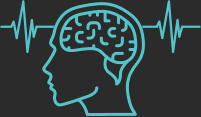Psychometric Information on the Panic Disorder Screening Tool
1) Screening is a quick and approximate process (Malika, 2010). It can be said that screening is the first step in the clinical assessment, i.e., the initial diagnosis is made, followed by other procedures to confirm or reject it.
2) Screening is typically used in contexts where specialists—whether clinicians or family physicians in primary care—are exposed to a large number of patients with various types of disorders. There is a pressing need for an accurate tool that helps reach the correct decision with minimal effort and time (Herr, Williams, Benjamin, & McDuffie, 2013).
3) Characteristics of the Panic Disorder Screening Tool:
1. Specific to the initial diagnosis (screening).
2. Concise items save time.
3. Easy to use and requires no effort.
4. An engaging and easy-to-use application process.
Do not hesitate to ask for help to get rid of panic disorder
Treatment of panic disorder usually requires psychotherapy or psychological counseling sessions.
The speed of getting rid of your disorder depends on the speed of your request for treatment.
Who do you ask for help from?
The clinical psychologist and the psychiatrist are qualified to confirm the diagnosis of panic disorder.
You can go as soon as possible to the nearest psychological center or clinic to receive treatment.
Procedures performed in the psychological clinic:
- Evaluation: Collecting information about the client to understand them better and more comprehensively (case study) through interview and observation. A psychological scale can also be used.
- Diagnosis and differential diagnosis:
- Determining whether the panic attack occurs due to:
- Physical illness.
- Panic disorder or another psychological disorder.
- Receiving treatment: The client learns about the type of their disorder and understands how and why the panic attack occurs. They will also learn about:
- Avoidance behaviors: Such as avoiding places where they had a panic attack.
- Safety behaviors: Such as staying near a health center or carrying a mobile phone everywhere.
- Thinking errors: Such as believing that what happens during a panic attack is a serious illness or a sign of going crazy.
- Type of emotion: Such as dysthymia or a sensitive mood.
